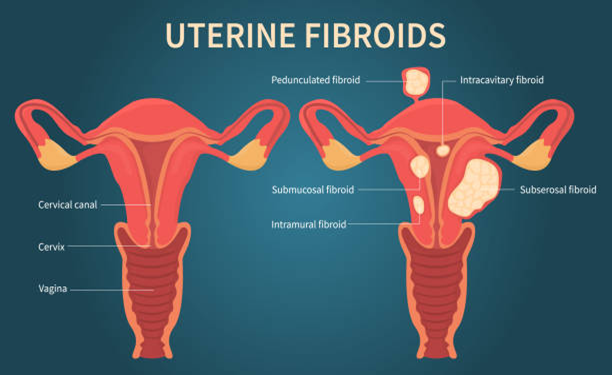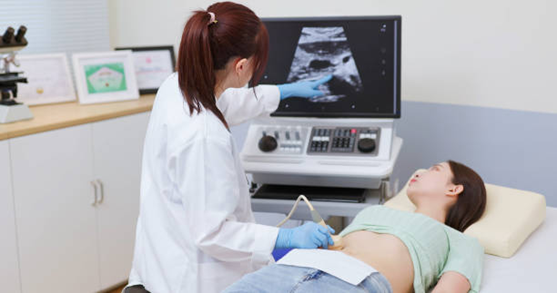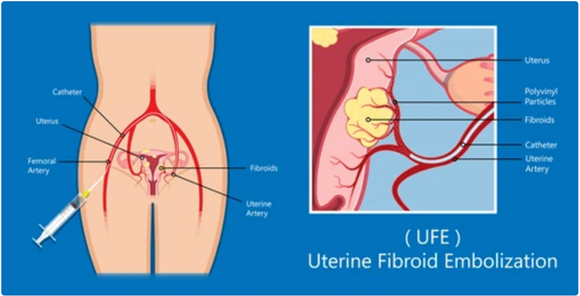Imagine looking at your life 1 year after UFE procedure. How does it impact your health and quality of life? Uterine fibroid embolization is a procedure for shrinking noncancerous tumors in the uterus known as uterine fibroids.

Dr. Himali Maniar, an expert gynecologist in Bopal, Ahmedabad, is known for her UFE treatment specialization. She offers diverse treatment choices and adapts to each patient’s specific needs.1 year after UFE is an important milestone.
Ready to explore UFE or seek clarity? Book a consultation with a fibroid treatment specialist to address your concerns
So let’s know what it exactly means. Also, its treatments, complications, and associated risks.
Understanding Uterine Fibroid Embolization (UFE)

Uterine fibroid embolization is a minimally invasive alternative to hysterectomy and myomectomy. This treatment is an alternative to major surgery. UFE procedure blocks the blood supply to the fibroid tumors, causing them to shrink. It needs little to no hospitalization with a faster recovery time. It is a highly effective treatment with a success rate of around 85%.
If your menstrual flow has been heavy, it should return to normal after UFE. People who undergo this procedure notice a significant reduction in the size of the uterine fibroids.
Monitoring and treatments post-UFE play a crucial role in long-term success let’s know how?
UFE Treatments and Monitoring
Doctors use imaging studies to identify the size, number, and location of fibroids.
Using imaging guidance, small particles known as embolic agents are inserted into the blood arteries that supply blood to the fibroids. It cuts off blood flow and causes the fibroids to shrink gradually.
Monitoring UFE includes
Symptom assessment:
Patients are usually asked to keep track of their symptoms after the procedure, including any pain, bleeding, or changes in menstrual cycles.
Imaging studies:
Follow-up imaging studies, such as ultrasound, MRI, or CT scans, may be conducted weeks or months after the UFE surgery to examine the size and quantity of fibroids.
Patient Counseling:
Patients should be informed about what to expect during the recovery phase, including typical post-procedure symptoms like discomfort, cramps, and vaginal discharge.
Long-term monitoring:
Long-term monitoring helps to track the durability of treatment outcomes, assess for fibroid recurrence, and address any ongoing symptoms or concerns.
If you’re experiencing symptoms of fibroids, don’t delay seeking help. Book an Appointment now!
UFE Procedure

Step-by-step procedure to effectively treat uterine fibroids:
Preparation:
Patients receive imaging tests such as an MRI or an ultrasound that verify the presence and location of the fibroid, which aids in procedural planning.
Anesthesia:
Local anesthesia and mild sedatives are used to keep the patient comfortable during the treatment.
Catheter Insertion:
A catheter is directed into an artery in the upper thigh or wrist using real-time X-ray imaging (fluoroscopy).
Artery identification:
The catheter is guided to the arteries that supply blood to the fibroids.
Embolization:
Tiny embolic particles are injected into the arteries, preventing blood supply to the fibroids, causing them to shrink and die over time.
Monitoring and Recovery:
After the procedure, patients are watched for a few hours to verify stability before being discharged. Pain relievers may be prescribed to reduce discomfort. Follow-up sessions are scheduled to evaluate progress and resolve issues.
What are the complications and risk factors of UFE?
Complications and risks associated with uterine fibroid embolization (UFE) may include:
- The catheter insertion site may get infected
- Bleeding or hematoma formation
- Pain or discomfort during post-procedure
- Allergic reactions to medications
- Surrounding tissues or organs such as the ovaries or uterus may get damaged
- Post-embolization syndrome, in the form of fever, pain, or nausea.
- Before undergoing UFE, patients are advised to discuss these potential risks with their doctor.
Take the first step towards relief and renewed well-being. Schedule an appointment now!
What happens 1 year post UFE?

Your life 1 year post-UFE is likely to be significantly improved compared to before the procedure.
Checkout some changes you might observe:
Symptom Relief: You may experience relief from symptoms such as pelvic pain, heavy periods, and pressure on your bladder.
Fibroid Shrinkage: Over the year following UFE, fibroids usually continue to shrink in size. Imaging studies, such as ultrasound or MRI, may be performed to evaluate the health of the uterus.
Quality of Life: Improved quality of life due to the resolution of fibroid-related symptoms can enhance your overall well-being.
Fertility: UFE does not negatively impact your fertility, and you can still consider pregnancy in the future.
Emotional Well-being: Being free from the burden of fibroid symptoms can have a positive impact on your mental health.
Long-Term Symptom Relief: The benefits of UFE are often long-lasting, with many patients experiencing sustained relief However, some patients may require additional treatment or monitoring in the future.
If you’re considering UFE or have questions about the procedure, schedule a consultation with a healthcare provider specializing in fibroid treatment.
Conclusion
In conclusion, the path after UFE surgery offers an array of positive changes and improved wellness. Recognizing the progress made toward increased well-being and energy is important for individuals who have chosen this route.
However, there is a practical requirement to remain attentive in follow-up appointments. By prioritizing proactive interaction with your gynecologist you can ensure ongoing development and better health.
FAQs
- Are there any side effects of UFE?
Yes, potential side effects include pain, nausea, fever, and rare complications like bleeding or infection.
- Do fibroids grow after UFE?
While UFE is intended to shrink fibroids, there is a possibility of their regrowth in some cases.
- Does UFE shrink the uterus?
Uterine Fibroid Embolization (UFE) primarily targets fibroids rather than directly shrinking the uterus itself.
- Does UFE affect hormones?
There are very rare effects of UFE on hormones, except for a small percentage of women experiencing early menopause as a result of the treatment.

